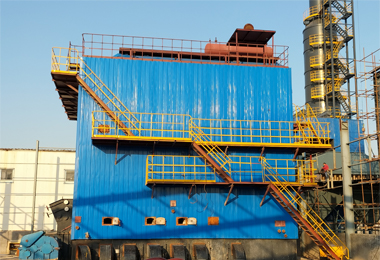
Nov . 08, 2024 17:07 Back to list
coal fired steam boiler price
Understanding the Pricing Factors of Coal-Fired Steam Boilers
In the industrial landscape, coal-fired steam boilers have long been a reliable source of heat and energy in various sectors, including power generation, manufacturing, and chemical processing. However, the price of these boilers is influenced by various factors, making it essential for businesses to understand what contributes to the overall cost. In this article, we will explore the primary elements that affect the pricing of coal-fired steam boilers and how they impact purchasing decisions.
1. Initial Costs of the Boiler
The first and most apparent factor affecting the price of coal-fired steam boilers is the initial cost of the equipment itself. Variations in price can be attributed to several factors, including the design, boiler size, capacity, and efficiency ratings. Generally, larger boilers with higher capacities and advanced features—such as increased efficiency and lower emissions—are more expensive. Manufacturers often develop specialized models to meet specific operational needs; thus, customized solutions tend to cost more than standard models.
2. Materials and Construction Quality
The materials used in constructing coal-fired steam boilers significantly influence their cost. High-quality steel and fabrication techniques enhance the boiler's durability and longevity. When selecting a boiler, it is crucial to consider the grade of materials used, as this impacts both the initial cost and long-term maintenance expenses. For instance, more corrosion-resistant materials can lead to a higher upfront cost but potentially lower maintenance and replacement costs over time.
3. Installation and Infrastructure
Beyond the boiler's purchase price, the installation costs can substantially impact the overall expenditure. Proper installation requires skilled labor and may involve infrastructure upgrades, such as chimney construction, piping, and electrical work. Companies must budget for these additional costs, which can vary based on the complexity of the installation site and specific local requirements.
4. Operational Efficiency
coal fired steam boiler price

The efficiency of a coal-fired steam boiler is another critical factor influencing its price. More efficient boilers can convert a higher percentage of coal's energy into usable steam, thus reducing fuel costs over time. While high-efficiency models may come with a higher initial price tag, they often result in lower operational costs, providing savings that can offset the initial investment. Businesses should therefore evaluate operating costs alongside initial costs when considering their options.
5. Regulatory Compliance
Environmental regulations governing emissions from coal-fired boilers play an integral role in shaping the pricing landscape. As emission standards become more stringent, the need for efficient pollution control devices, such as scrubbers and filters, can increase the overall price of coal-fired steam boilers. Companies must factor in potential costs associated with upgrades to meet these regulatory requirements, which vary by location and industry.
6. Market Trends and Supply Chain Dynamics
Like many industrial products, the prices of coal-fired steam boilers are influenced by broader market trends and supply chain dynamics. Fluctuations in coal prices, changes in demand for energy, and geopolitical factors can alter the cost of raw materials and, consequently, the price of manufacturing boilers. The ongoing global transition toward renewable energy sources may also influence the demand for coal-fired technologies, further affecting market prices.
7. Maintenance and Lifecycle Costs
Finally, when calculating the total cost of ownership, businesses must consider maintenance and lifecycle costs associated with coal-fired steam boilers. Regular maintenance is essential for optimal performance and longevity, which may require skilled labor and replacement parts. Firms should conduct a thorough analysis of expected maintenance expenses and the overall lifespan of the boiler before making a purchase decision.
Conclusion
In conclusion, the price of coal-fired steam boilers is influenced by a myriad of factors ranging from initial costs and material quality to regulatory compliance and market dynamics. Businesses must conduct comprehensive evaluations of these elements to make informed purchasing decisions. While the upfront price is an essential consideration, understanding the long-term benefits and costs is crucial for determining the best investment for energy and operational efficiency in the long run. By reflecting on these aspects, organizations can navigate the complexities of the coal-fired steam boiler market and choose solutions that align with their operational goals and budgetary constraints.
-
Comprehensive Guide to Steam Boiler Installation Diagram – Global Best Practices and Future Trends
NewsNov.24,2025
-
A Practical Guide to the Selection of Steam Boiler for Industrial Efficiency
NewsNov.23,2025
-
Comprehensive Guide to Steam Boiler PDF Manuals and Their Global Impact
NewsNov.22,2025
-
Discover How Steam Boiler Videos Improve Industrial Training & Safety
NewsNov.22,2025
-
Comprehensive Guide to Wood Fired Steam Boiler Design – Efficiency, Applications, and Innovations
NewsNov.21,2025
-
Comprehensive Guide to Steam Boiler Working – Efficiency & Applications
NewsNov.20,2025
Related PRODUCTS






















